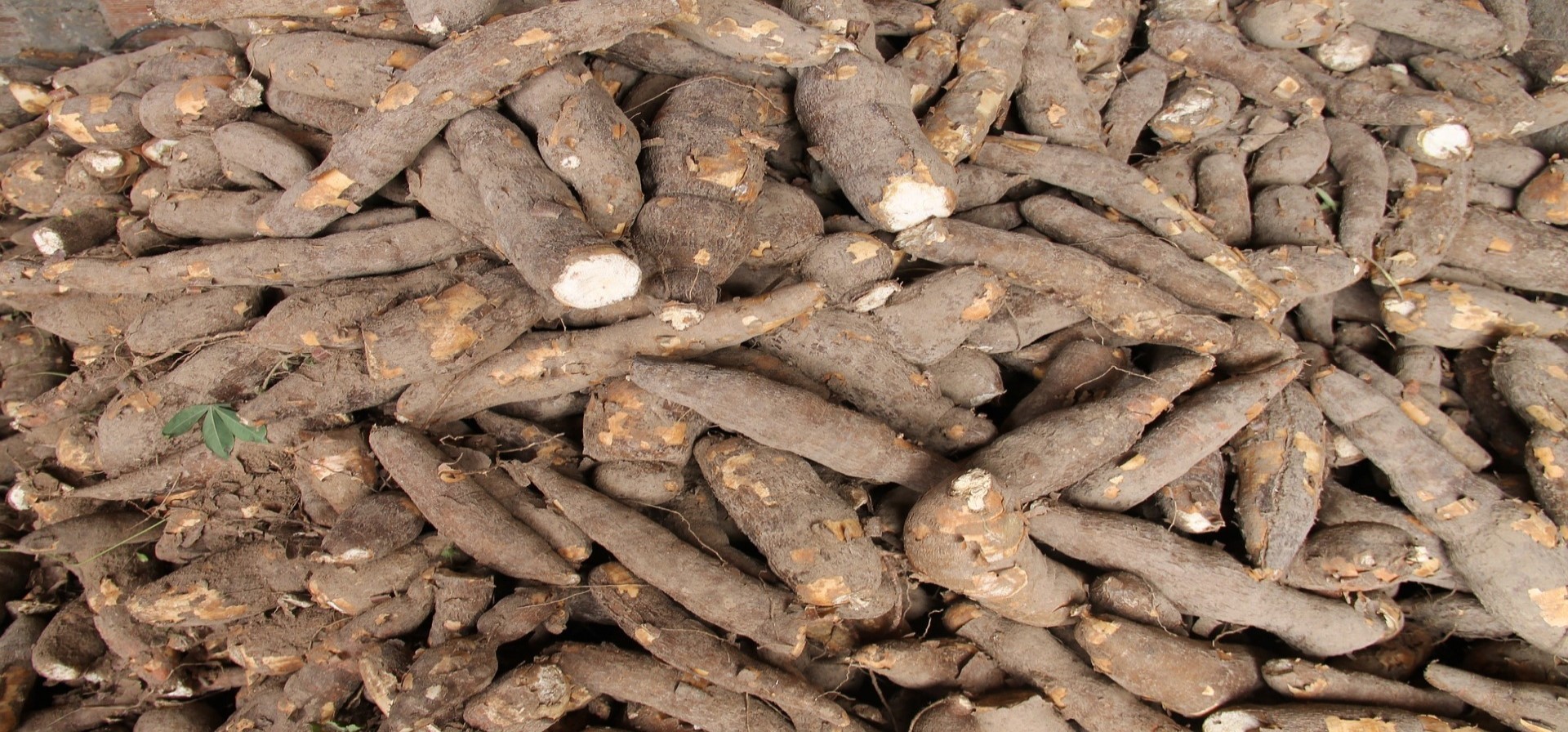
Cassava/木薯
Taxonomy: Magnoliopsida / Rosidae / Rosanae / Malpighiales / Euphorbiaceae / Manihot /Manihot esculenta
Introduction
1. Manihot esculenta, commonly called cassava , manioc, yuca, or tapioca is a woody shrub of the spurge family, Euphorbiaceae, native to South America, from Brazil and parts of the Andes.
2.Cassava is the third-largest source of food carbohydrates in the tropics, after rice and maize.
3. Cassava is classified as either sweet or bitter. Like other roots and tubers, both bitter and sweet varieties of cassava contain antinutritional factors and toxins, with the bitter varieties containing much larger amounts.
4. The cassava root is long and tapered, with a firm, homogeneous flesh encased in a detachable rind, about 1 millimetre (1⁄16 inch) thick, rough and brown on the outside.
5. Wild populations of M. esculenta subspecies flabellifolia, shown to be the progenitor of domesticated cassava, are centered in west-central Brazil, where it was likely first domesticated no more than 10,000 years ago.
Genomic Version Information
Manihot esculenta T2T
Abstract
Cassava is a crucial crop that makes a significant contribution to ensuring human food security. However, high-quality telomere-to-telomere cassava genomes have not been available up to now, which has restricted the progress of haploid molecular breeding for cassava. In this study, we constructed two nearly complete haploid resolved genomes and an integrated, telomere-to-telomere gap-free reference genome of an excellent cassava variety, ‘Xinxuan 048’, thereby providing a new high-quality genomic resource. Furthermore, the evolutionary history of several species within the Euphorbiaceae family was revealed. Through comparative analysis of haploid genomes, it was found that two haploid genomes had extensive differences in linear structure, transcriptome features, and epigenetic characteristics. Genes located within the highly divergent regions and differentially expressed alleles are enriched in the functions of auxin response and the starch synthesis pathway. The high heterozygosity of cassava ‘Xinxuan 048’ leads to rapid trait segregation in the first selfed generation. This study provides a theoretical basis and genomic resource for molecular breeding of cassava haploids.
Genome Information
| Genome size (bp): | 1,330,111,335 |
| GC content: | 37.65% |
| Chromosomes sequence No: | 9 |
| Genome sequence No: | 69 |
| Maximum genome sequence length (bp): | 44,930,793 |
| Minimum genome sequence length (bp): | 5,485 |
| Average genome sequence length (bp): | 19,276,976 |
| Genome sequence N50 (bp): | 36,200,004 |
| Genome sequence N90 (bp): | 32,632,344 |
Plant materials,Genome assembly
‘Xinxuan 048’, is a new cassava variety developed by Guangxi University from the natural variation population of germplasm resource ZM93, and then through systematic selection and directional selection. It has strong growth, high yield, good resistance and other good characteristics. The individual ‘Xinxuan 048’ whose genome was sequenced was obtained from the Guangxi Academy of Agricultural Sciences.
To estimate the genome size and heterozygosity size of cassava, we utilized k-mer analysis on PacBio HiFi reads. Specifically, we employed the Jellyfish (v2.2.10) and GenomeScope2 (v2.0) processes with different k-mer length settings. Additionally, we predicted the size of the cassava genome and heterozygosity based on second-generation Illumina reads utilizing the preqc program in sga (v0.10.15). Next, we use the pipeline method in Supplementary Data Fig. 1d for genome assembly. We combined the PacBio HiFi reads with double-ended Hi-C reads using the hifiasm (v0.16.1-r375). We utilized the pseudohaploid tool to perform de-redundancy. We used Juicer, 3D-DNA (v201008), and JuiceBox (v2.20.00) to complete the assembly of scaffolds. We used LR_Gapcloser and Racon (v1.4.3) with PacBio HiFi reads to fill gaps and correct haplotype-resolved genomes. We used RagTag (v2.1.0) to repair the telomere sequences. Subsequently, we used TGS-GapCloser (v1.2.1) with XX048 progeny ONT reads for gap filling and plion (v1.24) with Illumina paired-end reads for correction. Merqury (v1.3) was used to evaluate the base accuracy of diploid XX048 after gap repair, and homologous chromosomes with higher QV were selected to obtain the XX048 integrated gap-free genome.
Reference Publication(s)
Xu X D, Zhao R P, Xiao L, et al. Telomere-to-telomere assembly of cassava genome reveals the evolution of cassava and divergence of allelic expression[J]. Horticulture Research, 2023, 10(11): uhad200.https://doi.org/10.1093/hr/uhad200